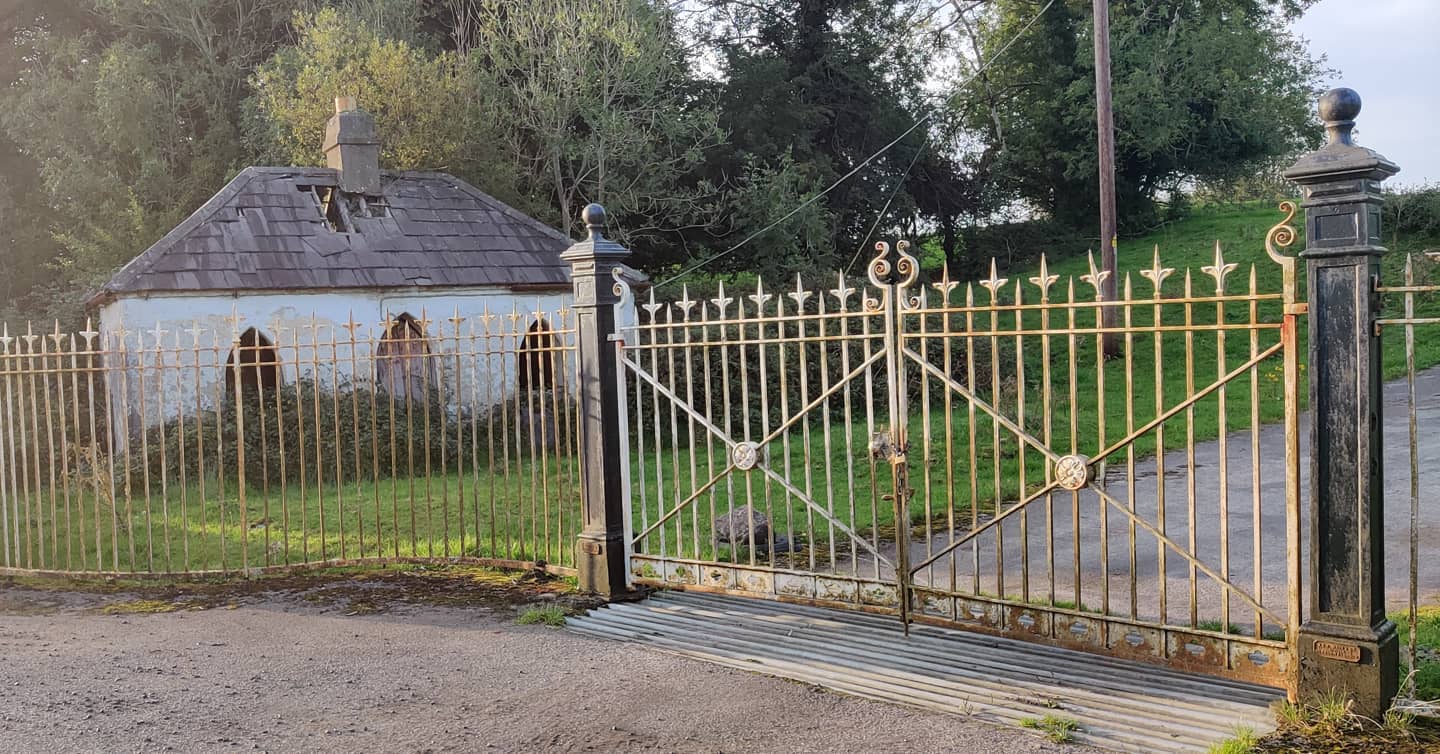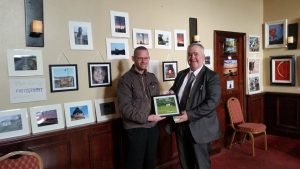Reading a take on memory from a fellow North Longford writer
John Connell is from outside my families home village of Ballinalee. Author of “The Cow Book” – which was given a different title for our American cousins! – he comes from the similar storytelling tradition as ourselves and that makes up the contents of his books.
His first book reflected on returning to work on the family farm after recovery from a serious bout of depression, his interaction with his father and neighbours, and what the land and its history means to him. He tells the stories of the area as he knows them, the tragedy of the Charter brothers, tales of the 98 rebellion, its heroes and villains, and in the same breath talks of the locals he knew that we feel we know now after hearing him speak of them.
His current book is in a similar conversational vein, the background to it now is him doing a marathon run along the byroads and lanes of his home half county.
There is, you see – according to us anyway! – a difference between North Longford and South Longford, the latter may as well be Westmeath (in the best sense of the phrase!)
His run around our half county passes comments on the LeFroys, the Charletons, we learn a little more on the Charter brothers, we hear of his recently departed grandmother, and the also recently departed Tommy Forster who I had the honour of meeting in lodges on a couple of occasions. His reflections on history as its passed on to him and he retells it invites contribution from others who know what they have learned or are told.
When Romance Comes Late in Life
The Charleton Fund and the local Folly are a subject he writes of and spoke on when on the Ray D’Arcey show . The version of the story I have – sourced from the writings of Frank Columb – was that Charlton had met and fell in love with a local girl, but his nephews tried to break the marriage. Others (Ref i; Ref ii) allude to the same but don’t say so directly, but blame his sisters, not his nephews.
On failing to prevent the marriage, in the tale as I know it, the nephews broke into his home one night, overpowered him and castrated him so he couldn’t have children and would have to leave the land and money to them. In revenge, he set up The Charlton Trust that issued a grant to all newlywed couples, which did so up to the 1950’s. As far as I know it was for Protestant couples, and its records are a great source for family research from the times.
Running the Race of Life
Many find running a great way to clear the head. Some say its the endorphin’s released when you exercise, yet those of us who like me cant run but walk report the same effects of a good stroll. Subscribers to the theory of the Japanese notion of “Shin Rin Yoku” say its getting out in the air and breathing in the scents of the plants around us, and either or both may be right.

As I was saying, running is not for me. But I will walk for Ireland, recently walking from Boyle to Knockvickar and on to Carrick on Shannon, for the craic. The head cleared, just caught in the moment of every passing vista, pausing to grab a photo (or ten!) before calling in on friends is a great way to spend a day.
Clearing the head is important. To place your worries and concerns away for a while helps us reset and rest the system and to cope with life. Depression is a majoy issue in rural Ireland, and only something openly spoken of now.

Even with nothing wrong, it can floor an affected person, John himself having a period he refers to as The Lost Time , where he lost six months to it. Treatment is expensive, and hard to obtain.
An exhibition I had a few photos in some years back aimed to improve this situation, and now Pieta House have outreach services in the wider area, but little directly in each community where it is needed. Awareness of the issue, and making ways to cope with it are vitally important.
I am a big believer in CBT – recognising when a bout comes on, adjusting your life to ride out the storm so to speak, and getting whatever help is needed if needed.
Who We Are and Who We Think We Are
In Longford, we have a major intrest in geneology, and our sense of place. I joke – half in earnest – that we are to Irish people in Ireland what Irish Americans are abroad.
An Irishman in America is always an Irishman, even if only one of his eight great grandparents came from Ireland, and he himself was never there. Us Longford folk – particularily those of us from the north of the county – are always from Longford according to ourselves even if we grew up in another county, and our parents or grandparents came from Longford.
Our Carty family are from Longford since circa 1820’s – as explored on my geneology website Who The Hell Do You Think You Are – our Donohoes since the 1500’s according to family lore (my theory they may be of the Blennerhasset settlements on the O’Reilly lands is to be explored and disproved or proven – and our Reilly are local to the mists of time. Our Coyles are from Ballyshannon I gather, but I lost the background story and our Houricans are from Limerick, but after that we know nothing.
Connell states in his Ray D’Arcey interview, his family are in North Longford since 1798, which is interesting, as some spell the name with one L, others with two. Traditionally such variance is seen as a change of faith and back again, but Connell or Connel may be a bit more interesting than that.
Post 1700 there was a large settlement of Catholic Flemish speaking weavers with French sounding names in Ireland due to the linene based economy collapsing in the area around Calais. Memories of the Dutch from the 1690 war was so fresh, it was expedient to abandon their language and names and they Irishised their names to fit in. One changed to Connell, the original I dont have to hand Coinuel is the closest spelling I can record from memory. The story goes they were instrumental in organising the 1798 rebellion and fighting in it, and many came to Longford in the Battle of Ballinamuck ith some settling locally.
That may or may not be the origin of Johns family, who is to know. The other famous person of the name in that period in the North Longford area ended up in Fiji where his issue live to this day, a long long way from their native County Clare.
Such history is debated back and forth, many like me tell the stories in all their gorey detail, others tone down the tale not to spread scandal. Then the first party think they dont know the story and tell what the second party would rather wasnt told, at least not in that way! Such is the joy of conversation and debate, and times and people are not forgotten. Indeed, we hope we learn from the mistakes of others.
Everyone Has a Book in Them
We all have stories to tell. Getting that down on paper to read as enjoyable as John Connells books is an achievement few try and less succeed to the degree of The Running Book and The Cow Book.
There is a lot of truth in the saying that everyone has a book in them.
Or two and counting in the case of John Connell.
Reference:
(i) https://discoveringlongford.wordpress.com/2015/02/26/the-story-behind-charltons-folly/(ii) https://moxhamireland.wordpress.com/2016/07/21/charltons-endowment-charitable-trust-fund-marriage-certificates/
(iii) https://www.exploringfamilyorigins.com/FarrellCharltonrecord.htm
(iv) https://www.nationalarchives.ie/article/february-document-month/
